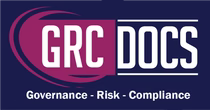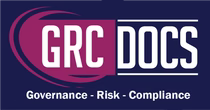SOC2 Logging and Monitoring Policy Template Download
Introduction
Logging and monitoring are essential components of an organization’s information security framework. They provide visibility into system activities, help detect anomalies, support compliance, and ensure timely responses to potential threats. The Logging and Monitoring Policy establishes clear protocols for collecting, storing, analyzing, and managing logs in compliance with Australian and New Zealand legal requirements.

Step-By-Step Guide For Using The Logging And Monitoring Policy
Step 1: Define the Policy Scope
-
What to do: Ensure the policy covers all staff, contractors, consultants, visitors, and third parties who create, access, or use organizational information.
-
Why it matters: Logs track activities across all user types, so defining scope ensures comprehensive monitoring and accountability.
Step 2: Assign Roles and Responsibilities
-
-
Management: Oversee implementation, allocate resources, and enforce compliance.
-
IT Department: Operate logging systems, manage monitoring tools, and train employees.
-
Employees: Follow policy guidelines, maintain confidentiality, and report irregularities.
-
-
Why it matters: Clearly assigned responsibilities prevent oversight gaps and ensure accountability.
Step 3: Establish Logging and Monitoring Practices
-
-
Maintain an inventory of all log sources (servers, applications, networks).
-
Implement a lifecycle process for log creation, maintenance, and secure disposal.
-
Ensure remote service logs capture data transfers securely, using encryption and authentication.
-
-
Why it matters: Comprehensive logging creates a clear record of organizational activities for troubleshooting, auditing, and security analysis.
Step 4: Enable Event Logging
-
-
Log events across systems, databases, servers, applications, and identity management activities.
-
Capture security-critical actions such as login attempts, configuration changes, account lockouts, and administrator commands.
-
Store logs centrally in a Security Information and Event Management (SIEM) tool for correlation and deeper analysis.
-
-
Why it matters: Detailed event logging helps identify malicious behavior, insider threats, and compliance violations.
Step 5: Ensure Log Integrity and Quality
-
-
Logs must include event source, ID, body, and timestamp.
-
Prevent users from being sole reviewers of their own activity.
-
Use filters, alerts, and alarms to flag deviations from normal baselines.
-
-
Why it matters: Reliable logs ensure transparency, minimize tampering risks, and provide credible evidence during investigations.
Step 6: Store and Retain Logs Securely
-
-
Securely archive logs for at least one year to support forensic investigations.
-
Ensure logs are stored in a read-only format, accessible only by authorized personnel.
-
Retain logs for a minimum of 90 days in active storage for real-time analysis.
-
-
Why it matters: Proper retention balances operational needs with regulatory compliance and forensic readiness.

Step 7: Synchronize Clocks Across Systems
-
-
Use Network Time Protocol (NTP) for consistent time synchronization across all systems.
-
Ensure all logs reference the same primary time source.
-
-
Why it matters: Accurate timestamps are crucial for forensic investigations, correlation of events, and audit reliability.
Step 8: Conduct Risk Assessments
-
-
Perform bi-annual risk assessments to identify weaknesses in logging and monitoring.
-
Assess risks linked to sensitive data handling, remote access, and system vulnerabilities.
-
Tailor risk mitigation strategies to evolving threats.
-
-
Why it matters: Proactive risk management reduces the likelihood of undetected or unmanaged incidents.
Step 9: Strengthen Security Measures
-
-
Deploy layered defenses, including firewalls, intrusion detection, and security audits.
-
Apply physical security measures to protect servers and log storage systems.
-
Ensure monitoring tools can detect both external and insider threats.
-
-
Why it matters: Effective monitoring works best when combined with strong technical and physical safeguards.
Step 10: Apply Access Controls
-
-
Restrict log access to authorized personnel only, applying the principle of least privilege.
-
Maintain audit trails of who accessed or modified logs.
-
Regularly review permissions to ensure appropriateness.
-
-
Why it matters: Access control ensures log confidentiality and integrity while enabling accountability.
Step 11: Comply with Legal and Regulatory Requirements
-
-
Align with Australian Telecommunications (Interception and Access) Act and New Zealand Telecommunications (Interception Capability and Security) Act.
-
Meet data retention and lawful interception mandates.
-
Train employees on legal requirements related to logging and monitoring.
-
-
Why it matters: Compliance avoids legal risks and demonstrates responsible data handling.
Step 12: Provide Training and Awareness
-
-
Train employees on the importance of logging and monitoring in detecting and preventing threats.
-
Issue regular awareness materials on best practices, regulatory changes, and emerging threats.
-
Incorporate logging responsibilities into onboarding and annual refresher sessions.
-
-
Why it matters: Employees are active participants in monitoring—training empowers them to recognize and report anomalies.
Step 13: Review, Update, and Enforce the Policy
-
-
Conduct annual policy reviews, or more often if laws, business processes, or technologies change.
-
Document and approve all policy exceptions at the senior management level.
-
Ensure board approval and require acknowledgment from all employees and contractors.
-
-
Why it matters: Continuous review keeps the policy current, enforceable, and aligned with business and regulatory needs.
Conclusion
The Logging and Monitoring Policy ensures that organizational systems remain secure, accountable, and compliant. By following these thirteen steps—ranging from defining scope and roles, enabling detailed event logging, securing logs, and synchronizing time, to conducting risk assessments and enforcing compliance—organizations can build a resilient monitoring framework. Regular training, policy reviews, and strong security measures further strengthen trust and ensure long-term protection of data and systems.





